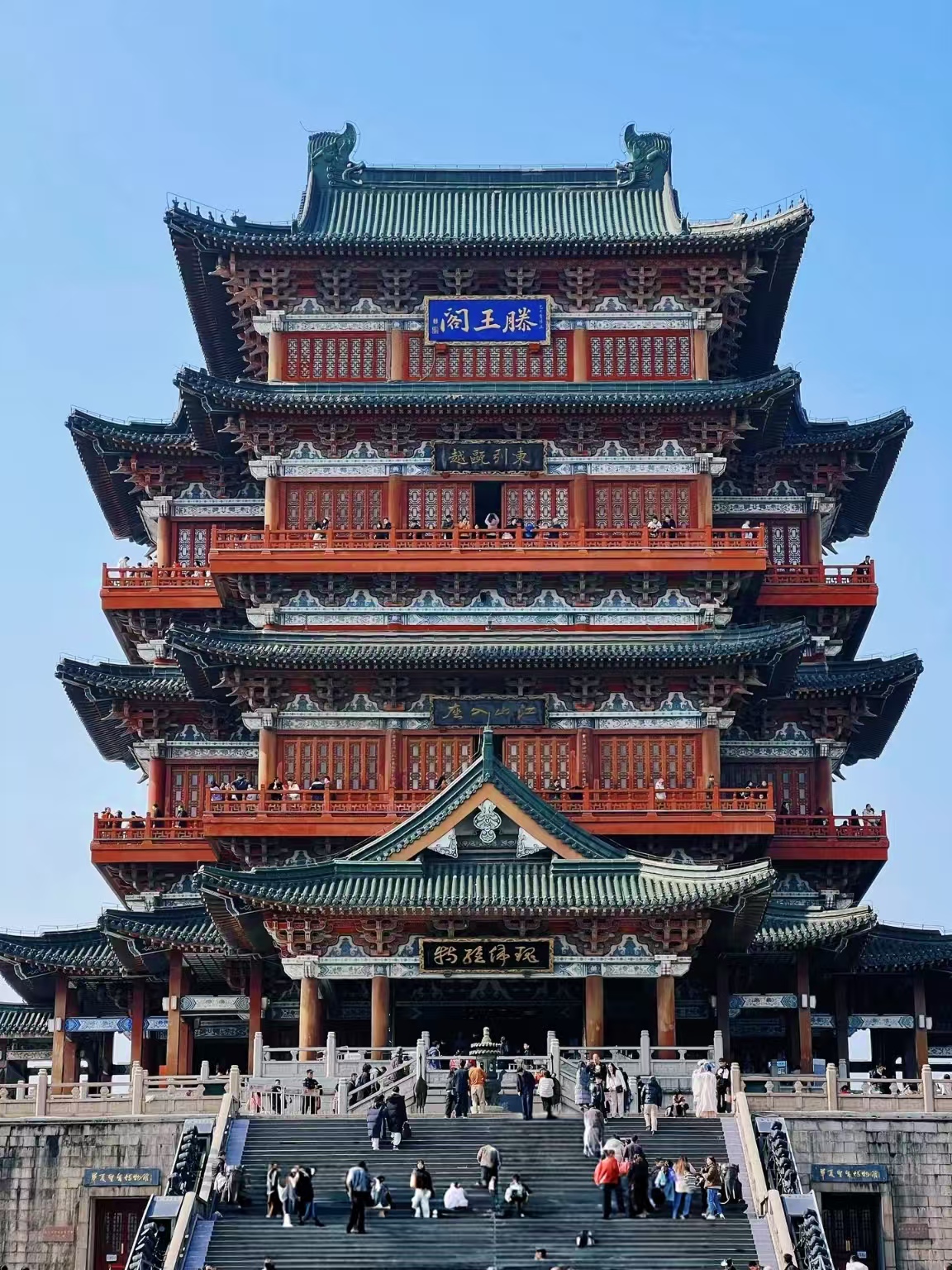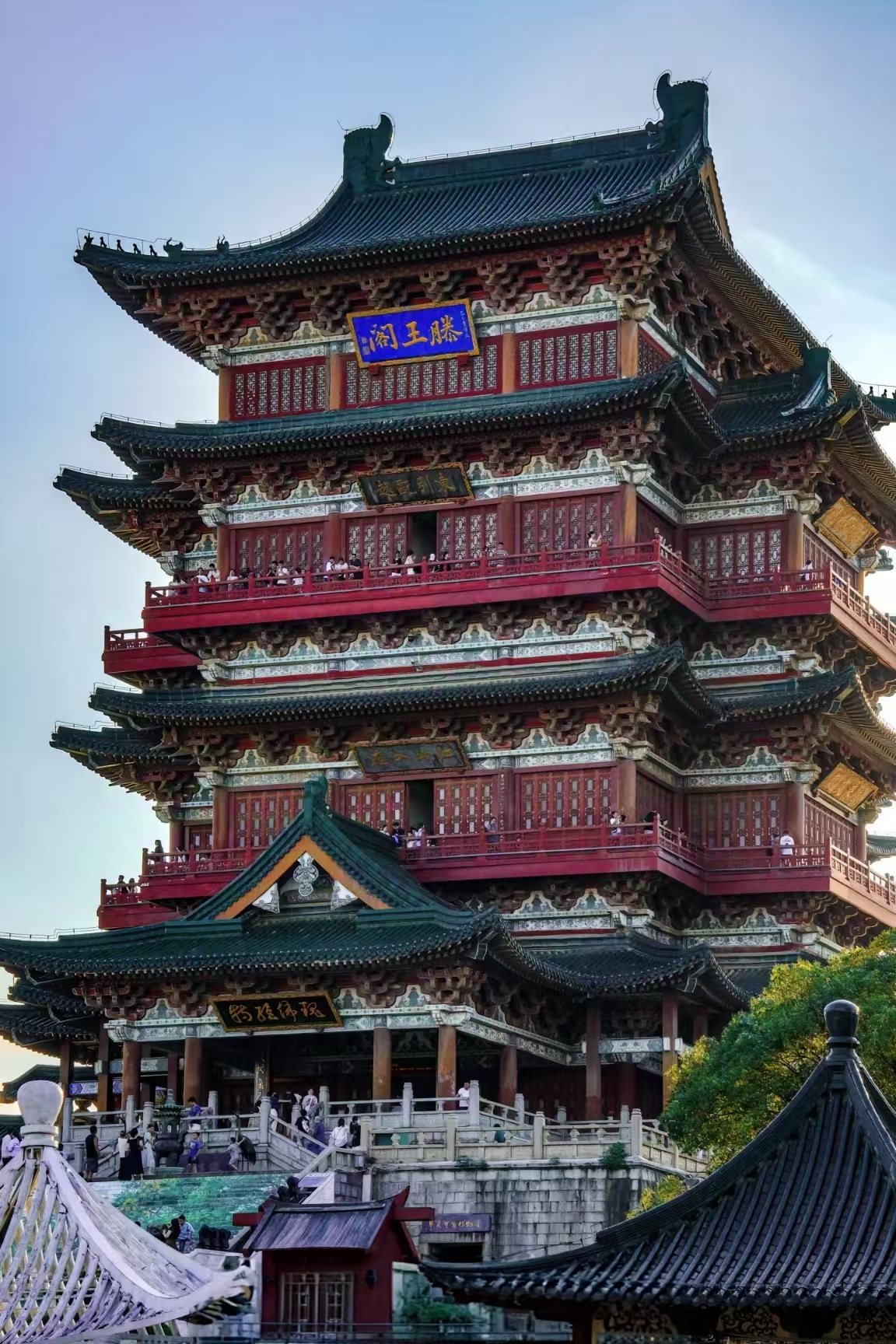Prince Teng’s Pavilion, a renowned architectural marvel in Chinese history, is located in Donghu District, Nanchang, Jiangxi Province. Alongside the Yueyang Tower in Hunan Province and the Yellow Crane Tower in Wuhan, Hubei Province, it is celebrated as one of the “Three Great Towers of Jiangnan” and ranks among the “Four Great Towers of Ancient China.” Known as the “First Tower of the Western River,” this iconic structure has captivated visitors for centuries with its cultural significance and timeless beauty.

Originally constructed in the fourth year of the Yonghui era of the Tang Dynasty (653 AD), Prince Teng’s Pavilion was commissioned by Li Yuanying, the 22nd son of Emperor Gaozu of Tang and younger brother of Emperor Taizong. As the Prince of Tengzhou, Li Yuanying bestowed his title upon the pavilion, which later achieved enduring fame through Preface to Prince Teng’s Pavilion, a literary masterpiece by the early Tang poet Wang Bo.
The main structure of Prince Teng’s Pavilion rises to a height of 57.5 meters, encompassing a total floor area of 13,000 square meters. Its base features a 12-meter-high platform divided into two tiers, symbolizing ancient city walls. Above this platform, the main pavilion follows the unique architectural style known as “three visible and seven hidden floors” : while the exterior appears as three stories with surrounding corridors, the interior reveals seven levels—three visible floors, three concealed floors, and an attic. The ridge of the pavilion is adorned with a 3.5-meter-high Chiwen, a traditional Chinese architectural ornament modeled after Song Dynasty designs. Shaped like a mythical creature with a beast’s head and fish’s tail, Chiwen are typically placed at both ends of palace or temple roof ridges, symbolizing protection against fire and evil spirits. The eaves tiles are specially crafted, with goutou (end tiles) inscribed with the characters “滕阁秋风” (Autumn Winds at Prince Teng’s Pavilion) and dishui (drip tiles) featuring a pattern of a solitary wild duck.
Prince Teng’s Pavilion is not only an architectural masterpiece but also a profound symbol of traditional Chinese culture. It has witnessed the rise and fall of feudal dynasties and the enduring legacy of the Chinese nation, embodying the essence and values of Chinese civilization. Throughout its history, the pavilion has been destroyed and rebuilt 29 times. The current structure, modeled after the Song Dynasty’s original design, was reconstructed and opened to the public during the Double Ninth Festival in 1989.
The preservation and inheriting of the Pavilion of Prince Teng not only safeguard traditional Chinese culture but also contribute to global cultural exchange and the celebration of cultural diversity worldwide.
The architectural style and construction techniques of Prince Teng’s Pavilion represent the pinnacle of ancient Chinese architectural achievement. Its intricate decorations and inscribed calligraphy showcase the splendor and diversity of China’s cultural heritage. More than a tourist attraction, the pavilion stands as a vital cultural relic and has been inscribed on the UNESCO World Heritage List. The preservation and inheritance of Prince Teng’s Pavilion not only safeguards traditional Chinese culture but also contributes to global cultural exchange and celebrates the richness of cultural diversity worldwide.



